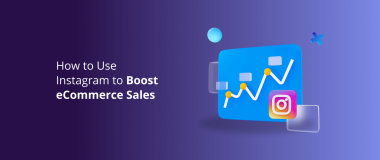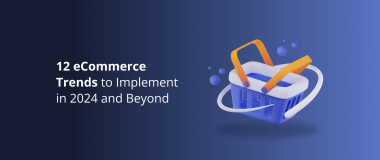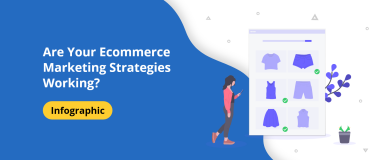Working hard and working smart is great, but not if you don’t have the eCommerce marketing tools to back up your efforts to increase online sales. If that’s the case, you’ll find yourself at a disadvantage against your competitors who are leveraging the right strategies for success.
In this guide, we’re going to look at several tools that you can use to help you on how to promote your dropshipping store and grow your sales.
Along with the tools, we will also cover several proven eCommerce marketing strategies.
7 eCommerce Marketing Tools To Increase Online Sales
- Loyalty program apps – LoyaltyLyon
- Social media marketing automation tools – Sked Social
- Email automation tools – Mailchimp
- SEO plugins – Plug In SEO
- Product promotion tools – Google Merchant Center
- Graphic design tools – Canva
- Shopping cart abandonment tools – Rejoiner
As a marketer, you know that increasing online sales is key to your success. And while there are many ways to do this, using the right eCommerce marketing tools is essential. So, we’ll share seven of our favorites. Read on and see how you can start using them today!
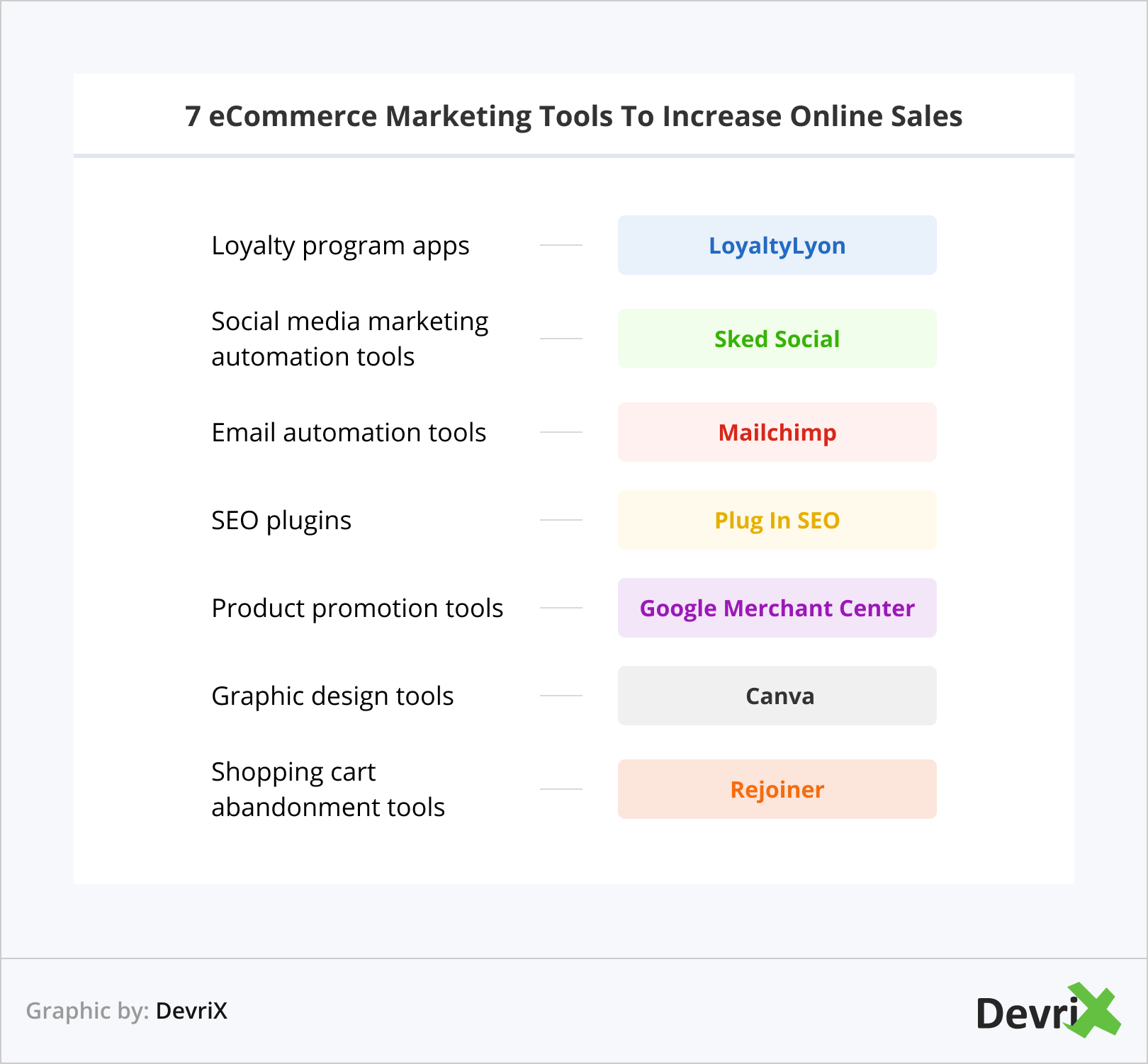
1. Loyalty Program Apps – LoyaltyLyon
Remember – acquiring new customers is more costly than selling to your existing ones.
This tells us why building a loyal customer base is a sound business decision.
Not only can you generate more sales at a faster pace, but you also won’t have to spend as much.
One way of establishing loyal customers is by setting up loyalty program apps on your eCommerce store.
You can integrate a dedicated tool like LoyaltyLion to your online store and create customizable rewards programs that let you “reward” your customers for doing specific purchasing actions.
Once you install the app to your eCommerce store, when your customer clicks on the “Earn Points” button, they will be shown the information in the screenshot below.

You can customize your loyalty programs to follow the latest eCommerce trends and set the corresponding point. This way you can make sure that your customers can earn for each action, such as Instagram follows, newsletter signups, and more.

The tool can show you the percentage of your loyal customers, your revenue, and your customer spending from your eCommerce store.
LoyaltyLion will also give you details of your customers’ purchase activity, such as the frequency of their purchase and the amount of their total spend.
Here’s an extra tip: If you want to boost your loyalty programs to get more customers, identify your best marketing channels, like your social media accounts, and create content that promotes your loyalty programs.
By using LoyaltyLion and other rewards apps, you can help increase your eCommerce store visitors’ engagement and your existing customers’ lifetime value.
By “rewarding” your customers to buy your products, you can create a purchasing cycle that encourages them to keep buying from your dropshipping store.
2. Social Media Marketing Automation Tools – Sked Social
Instead of manually sharing the blog posts that you published on your dropshipping site, you can schedule them to go live automatically on your social media accounts.
This way you’d be able to avoid spending several hours posting articles depending on the number of social media profiles that you own.
Of course, the more time you free up doing menial tasks, the more time you can spend growing your dropshipping store.
One of the social media marketing automation tools you can use is Sked Social.
The tool can automate your social media posts by creating a schedule for your various social media accounts.
After connecting Sked Social to your dropshipping website, you can connect your social media channels, and schedule all your posts in advance.
Using the tool’s planner, you have the option to create daily or weekly post schedules.
The tool imports all your products from your eCommerce store. Therefore, you don’t have to manually copy and paste product details and photos to each of your social media accounts.
By using social media marketing automation tools for your eCommerce marketing strategies, you can make sure you don’t forget about posting relevant content. Also, this is a surefire way not to miss out on opportunities to engage your followers, promote, and sell your products.
3. Email Automation Tools – Mailchimp
Sending emails e is still one of the most effective ways to promote the products you’re selling in your dropshipping store.
Since you’re sending your products directly into your customers’ inbox (or prospects’ inbox), you’d have a higher chance of getting them to see your offer.
What’s more, by using free email automation tools like MailChimp, you can segment your buyers and set them into email sequences that are focused on selling them based on where they are in their buying cycle.
That bit is crucial, since you can customize your offer to be highly relevant to them — which makes it easier for them to take action on your offers.
For example, you can send out discount codes to your subscribers who have visited your dropshipping store a couple of times but have not bought anything yet.
You can also use MailChimp’s customizable templates to build your automated emails’ content, styles, and send out test emails to your collaborators to get feedback on your campaign.
You can also modify your email automation triggers, set your schedule, filter by segment or tags, and more. As you now see how crucial segmentation and personalization is to increase sales for your eCommerce business, you can’t afford to go without them.
Once you’re done creating your emails, you can then set up your email automation workflow.
MailChimp also offers features to help you check who opened the emails that you sent, which email links were clicked on, and understand how your subscribers interact with your email content.
To some extent, you can also determine the landing pages your customers came from.
With email automation, you can set up your email marketing campaigns without having to check on them every single day. When they’re set up, they’ll keep on running 24/7.
4. SEO Plugins – Plug In SEO
If you want search engines to show your dropshipping store to its users, then you need to optimize your website for that.
Here’s the thing.
If you only use paid ads to market the products in your dropshipping store, then there won’t be much longevity to the traffic you’re generating (or your marketing campaign, overall).
As soon as you turn off your paid ads, you’ll lose a good bit of your website traffic — and I’m talking about over 90% of it.
Bupkis. Nada. Zilch.
Most of your traffic will disappear in a matter of minutes.
You don’t want that, do you?
Instead of relying solely on paid ads to bring in traffic and leads to your website, why not pursue organic traffic from the search engines as well?
To help you with that, you can install plugins into your website that can help improve your dropshipping site’s SEO.
Plug in SEO is one such tool.
Plug in SEO can check your dropshipping website for SEO issues and gives you recommendations on how to fix them.
Also, if the tool doesn’t find any issues to fix, it will offer you the best practices to maintain your on-page SEO strategies.
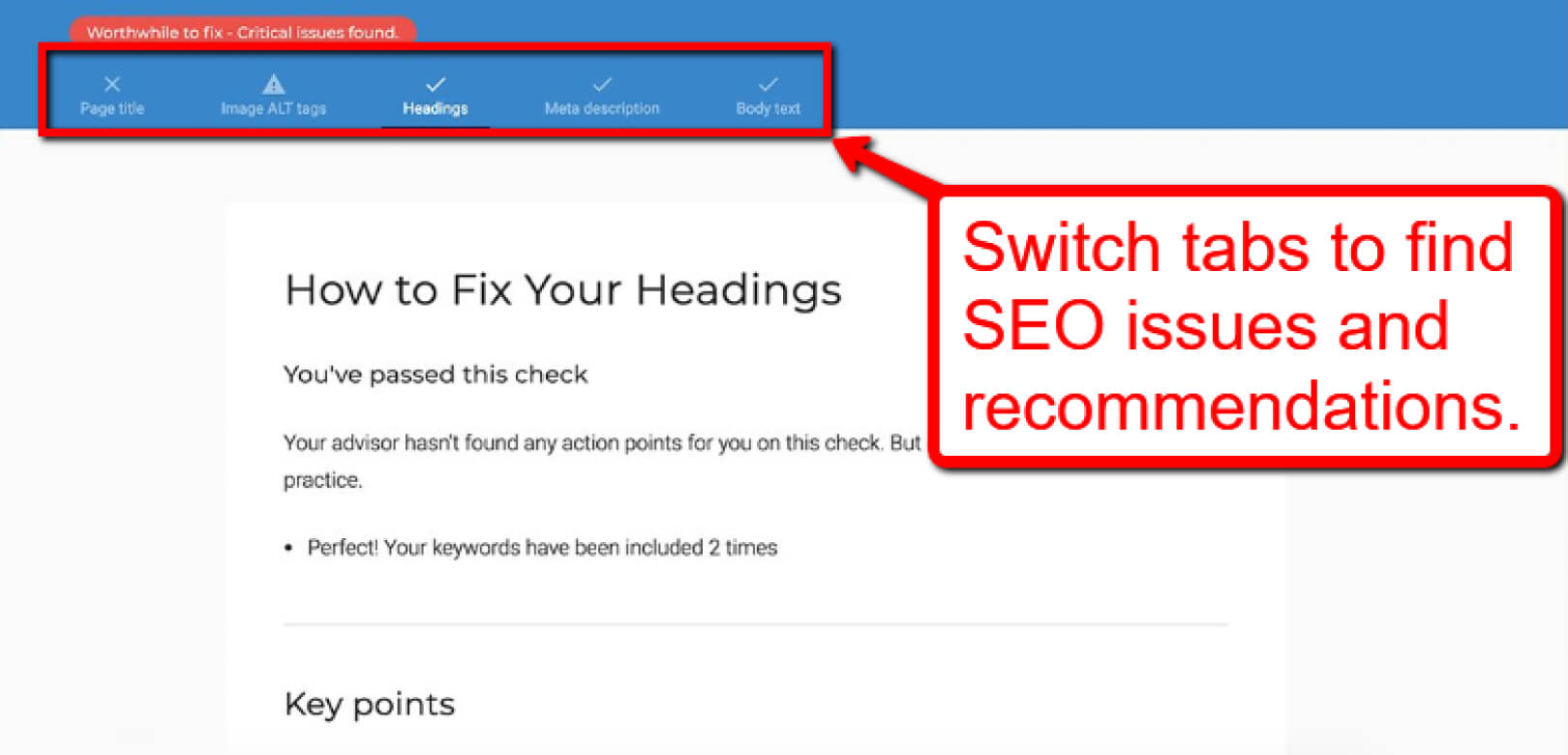
Plug in SEO also offers templates to help you create and optimize your product titles and descriptions, allowing you to improve them all at once.
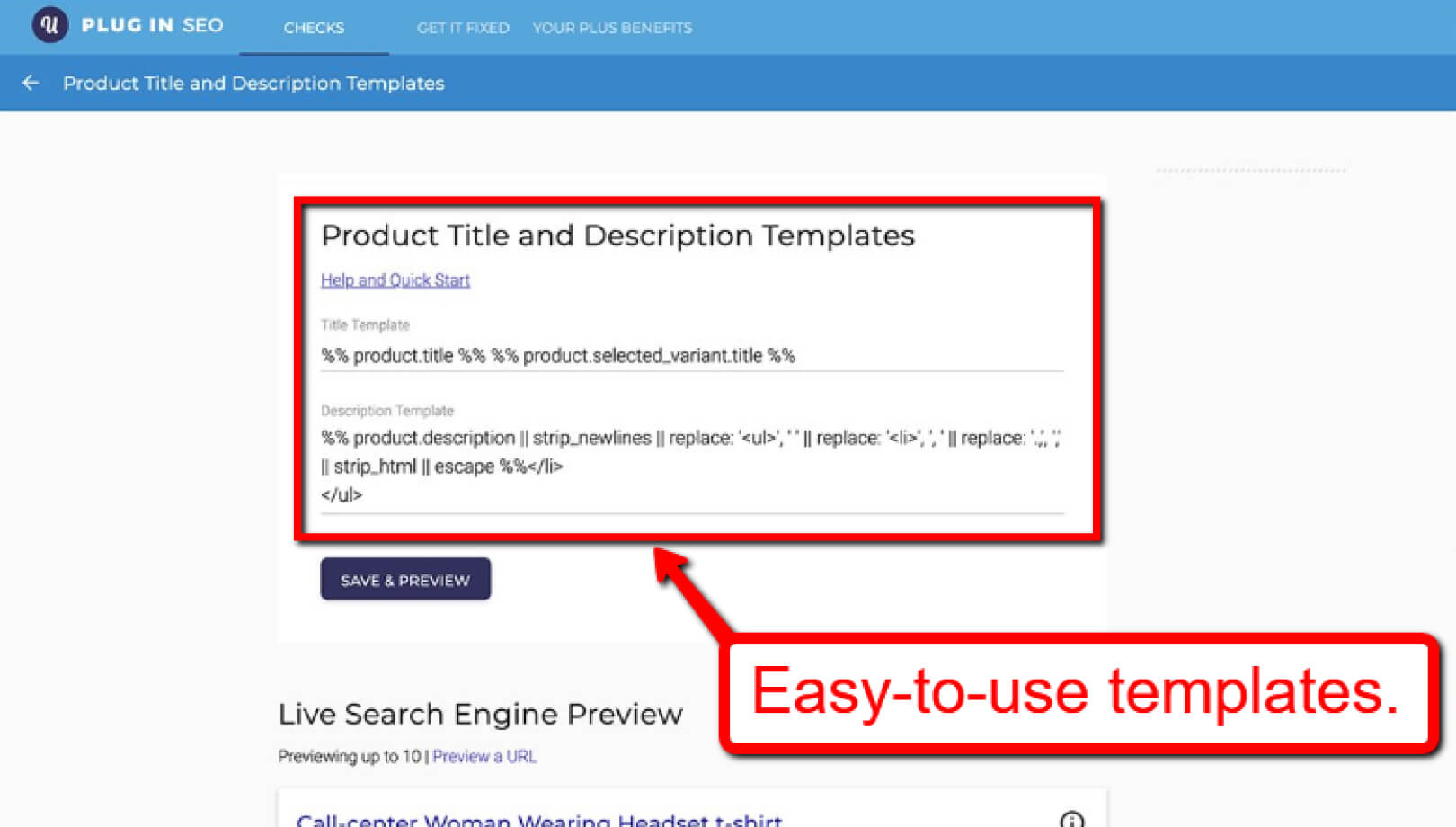
5. Product Promotion Tools – Google Merchant Center
Paid Ads and SEO are some of the best eCommerce marketing strategies you can employ to bring more online visibility to your eCommerce store.
What you need to know is, there are other ways to let online shoppers explore, discover, and buy your products.
With Google Merchant Center, you can get your product and online store information into Google, making them available to your potential customers when they search on a Google property.
To set up, go to Google for Retail, click on Merchant Center, and follow the three easy steps shown in the screenshot below.

Once you’re done setting up, you can start uploading your accurate product information or sync them with your Shopify account and reach potential customers across Google.
The tool can help you get actionable and integrated insights on merchandising, pricing, and more to improve your business and eCommerce marketing strategies.
You can also get reporting and campaign management tools to help you discover how you compare with your competitors, save time and financial resources, and look for your next opportunities for growing your eCommerce business.
6. Graphic Design Tools – Canva
Graphic design is an important part of any eCommerce business, and it’s something that you’ll need to invest in if you want to succeed. Fortunately, there are a number of great graphic design tools available that can help you to create professional-looking designs without spending a fortune.
Some of the best graphic design eCommerce marketing tools include Canva, Adobe Creative Cloud, and PicMonkey. These tools can help you to create custom logos, product images, ads, and more.

7. Shopping Cart Abandonment Tools – Rejoiner
Shopping cart abandonment is a huge problem for eCommerce businesses, and it’s something that can really hurt your development. Fortunately, there are a number of tools available that can help you to recover abandoned carts and boost online sales.
Some of the most popular shopping cart abandonment tools include Rejoiner, CartHook, and Jilt. These tools can help you to automatically send abandoned cart emails, offer discounts, and more.
What’s Next?
These are just seven of the eCommerce marketing tools that can help you promote your brand and ultimately fulfill your sales goals.
Keep in mind that no two businesses are alike, and the kind of tools that work for one eCommerce business might not work for you.
In reality, information on how to promote your dropshipping store should be tracked non-stop. Never stop looking for ways to improve, and develop, your online business.
It might take a bit of elbow grease and some of your time, but it’s worth finding the right tools to give you the results you need.
We hope you found this information useful. Please take three seconds of your time to share this post. Cheers!
Author Bio: Sean Timothy is passionate about writing. He mainly writes about topics on marketing, web security, blogging, and travel.



